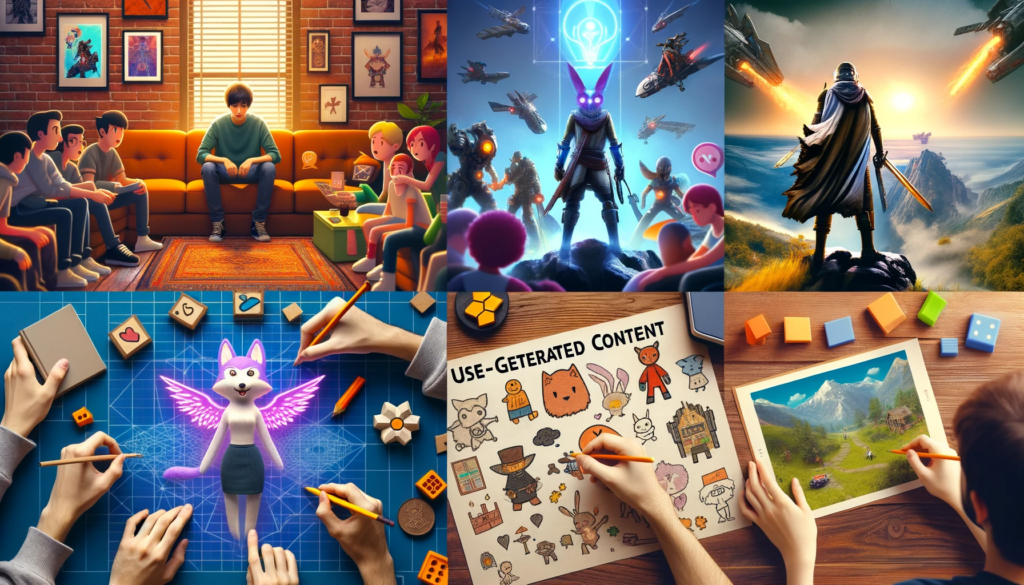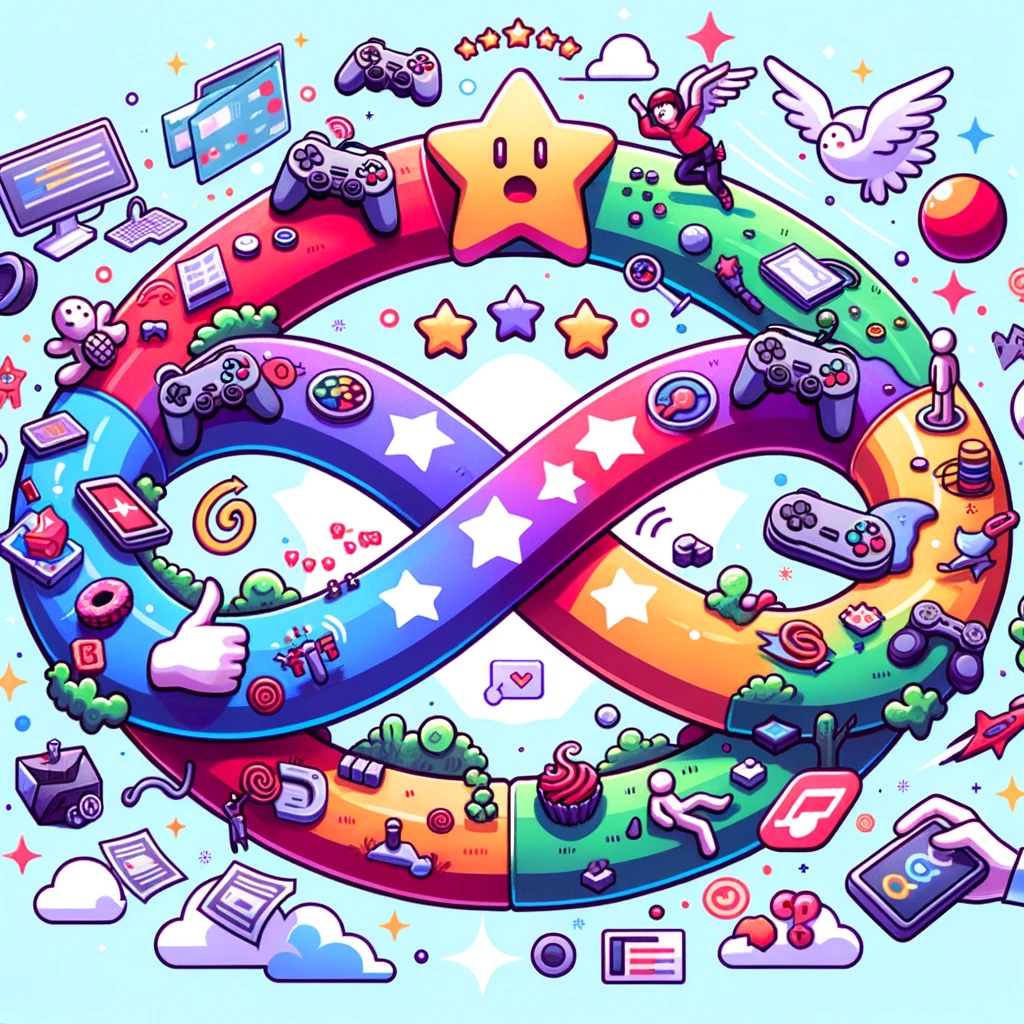Community Building
Forums & Social Media
Key KPI: Community Engagement Rate
Gaming and the Power of Community: The PLG Nexus
In today’s digital ecosystem, Product Led Growth (PLG) has risen as a pivotal strategy. PLG focuses on the product experience itself as the primary driver for growth, leaning on users to spread the word and advocate for the product. How does this concept tie into the gaming world, and why is a robust community so critical?
- The Essence of Community Engagement: Gaming is, at its heart, a communal activity. Beyond the gameplay, it’s about sharing triumphs, strategies, and stories. Through active community engagement across various platforms tailored to different generational preferences, games ensure a continuum of engagement, converting players into organic advocates who further the game’s growth.
- The Natural Synergy of PLG in Gaming: Like PLG-oriented software, a game’s success is greatly determined by its user base. Engaged players become organic promoters—they invite friends, share experiences, and write reviews. These actions are integral to organic growth and can significantly reduce user acquisition costs.
- Feedback Loop – A Vital PLG Component: A thriving community serves as a real-time feedback channel. Players discuss various aspects of the game, from mechanics to character dynamics. This immediate feedback, resonating with PLG’s continuous product enhancement philosophy, allows developers to fine-tune the game based on player feedback, ensuring it evolves in line with player desires.
- Establishing Authenticity and Trust: An engaging community strategy cultivates trust. When players feel their voices matter and are acted upon, it builds loyalty. This trust not only reduces churn but also increases the propensity for in-game purchases and recommendations to peers.
User-Generated Content
In the vibrant world of gaming, where passionate conversations flood forums and social media, User-Generated Content (UGC) emerges as a cornerstone. Drawing from insights by Forbes, we’ll delve into how UGC shapes gaming and its undeniable importance.

- UGC: Beyond the Game Mechanics Players aren’t just participants; they’re creators. Whether it’s through fan art, custom levels, or shared game strategies, they’re contributing to the game’s narrative and community. Just like posting a new pair of sneakers on Instagram or unboxing the latest tech gadget, these in-game contributions serve as authentic endorsements, far more impactful than any advertisement.
- Building Trust and Community Through Authenticity Games are more than just software; they’re experiences. And when players share these experiences, it creates a ripple effect. Potential players see this genuine interaction, reinforcing trust in the game and strengthening the bond within the community. It’s akin to modern word-of-mouth, as highlighted by Forbes.
- Harnessing UGC for Game Evolution Developers stand to benefit immensely from UGC. It’s not just about feedback; it’s about understanding player preferences, desires, and needs. By spotlighting achievements or hosting design contests, developers can foster a space for creativity and also gather invaluable insights for future updates.
- Ethical Engagement with UGC While it’s tempting to use UGC for official promotions, it’s paramount to respect intellectual property rights. As Forbes points out, brands, including game developers, must act with integrity, ensuring they always have explicit permissions when leveraging player-created content.
In conclusion, UGC acts as the bridge connecting developers and players, fostering a thriving community. In today’s competitive gaming landscape, embracing UGC can be the differentiator between a fleeting title and an enduring classic.
Ambassador Programs: Leveling Up in the Gaming World
The heart of any game lies not just in its code, but in the vibrant communities that players build around it. Taking cues from successful brand ambassador programs, the gaming world can harness similar strategies to foster player loyalty and enhance engagement. Here’s how the gaming industry can adapt some of these insights for its unique landscape.
Concepts from Successful Brands:
- Local Community Engagement (Inspired by Lululemon): Engage local communities through regional events, fostering a sense of belonging and trust.
- Experience Over Product (Inspired by Red Bull): Focus more on the holistic experiences, creating memorable moments that resonate beyond just the “normal”.
- Exclusivity and Community (Inspired by Harley Davidson): Offer exclusive communities or clubs, providing a sense of status and belonging.
- Empowerment and Achievement (Inspired by Xbox): Reward players for both in-game and community-based accomplishments, promoting active participation.
- Long-term Commitment (Inspired by Maker’s Mark): Engage drinkers with prolonged goals and rewards, deepening their connection to the brand and community.
Gaming’s Take on Ambassador Programs:
Ambassador programs in gaming can be incredibly powerful. Players who are deeply passionate about a game can serve as its best promoters. The benefits of such programs include heightened engagement, increased player retention, and a thriving, supportive community. However, there are challenges to consider. It’s crucial to balance rewards to cater to both dedicated and casual players, ensuring that everyone feels valued and included.
Drawing insights from successful ambassador programs in other industries, as showcased on Duel, can provide gaming companies with a roadmap to strengthen their community bonds and turn players into true brand champions.
Data Analysis
Metrics: Acquisition to Retention
Key KPI: Player Lifetime Value (LTV)
Player Lifetime Value is a crucial metric that represents the net profit a game developer expects to earn from a player throughout their gaming journey. It’s not just about the revenue a player brings, but also the costs associated with acquiring them. While it’s straightforward to calculate a player’s expenditure over a timeframe, deducing their overall value to the community requires a nuanced approach.
- Modeling vs. Exact Calculations: As a game’s community remains active, all LTV calculations are, in essence, predictive models. Given many players are still engaged, their LTV is an evolving figure. From quick estimations, like dividing the game’s total revenue by registered players, to more intricate methods using ARPU (Average Revenue Per User), developers have a plethora of modeling techniques. The key is to find the balance between quick insights and detailed accuracy.
- Defining & Calculating LTV: Determining the “lifetime” for LTV calculations is both art and science. A stretched definition might incorporate inactive players, skewing results. By focusing on a more concise timeframe, developers can achieve precise LTV insights. Advanced models, such as those detailed in Gamedonia’s article, offer deep insights but require extensive data, often spanning at least 180 days.
- Cohort Analysis & External Influences: Beyond general calculations, players can be segmented into cohorts for nuanced LTV comparisons. Grouping by shared attributes, like registration date or acquisition method, offers richer insights. Additionally, LTV models must adapt to external variables, such as game virality or unexpected promotions. Viral players, for instance, may cost less to acquire but yield similar revenue.
- The Power of LTV Analysis: Deciphering LTV provides invaluable insights into a game’s profitability and the efficacy of marketing strategies. Often dubbed the “king” of app metrics, LTV is more than just a number. It’s a compass that guides developers in growing and nurturing their gaming community.
Data insights were sourced from FunMetric’s article and Gamedonia’s detailed piece.
Feedback Loops in Game Development
The Power of User Reviews: Feedback is the compass that guides game development. Every review, be it praise, criticism, or suggestion, serves as raw data for continuous improvement. Through aggregated sentiments from user reviews, developers get a clear window into common issues and desired features. For instance, if a multitude of users reports a particular bug or advocates for a feature, it sets a clear development priority. Furthermore, rating trends can act as a health check for the game. A sudden drop after an update signifies the need to re-evaluate recent changes, while a positive trend could be the result of successful feature additions or bug resolutions.

Discoverability, Relevance, and Market Analysis: Ensuring that a game is not only refined but also discoverable is key to its success. Keyword analysis, typically associated with marketing, can provide insights into player perception and discoverability. Aligning popular search terms with game features ensures better visibility and attracts the right audience. Moreover, there’s much to glean from the gaming landscape at large. Periodic benchmarking against competitors can unveil market trends, indicating the game’s strengths and areas that might benefit from enhancements.
Closing the Feedback Loop with Engagement: Gathering insights is just one side of the coin. The real magic happens when developers actively engage with their player base. Responding to reviews, addressing concerns, and showcasing a commitment to betterment can turn even a casual player into a brand advocate. It demonstrates that the game isn’t a static product but a dynamic entity that evolves with its community.
By marrying these feedback pillars with actionable insights, developers can ensure their game remains both relevant and adored by its audience.
Insights sourced from a medium article on feedback loops in games.
Conclusion
In the vast expanse of the gaming universe, the journey from crafting a game to nurturing its community is intricate. But with a keen eye on the above KPIs, strategies, and a genuine commitment to player engagement, developers can create experiences that resonate for years. Remember, in this realm, it’s not just about the pixels and code; it’s about the shared stories, the adrenaline-pumping challenges, and the heartwarming community moments. Stay tuned to these metrics, adjust your strategies accordingly, and watch as your gaming universe thrives and flourishes. After all, isn’t that the ultimate level-up?





